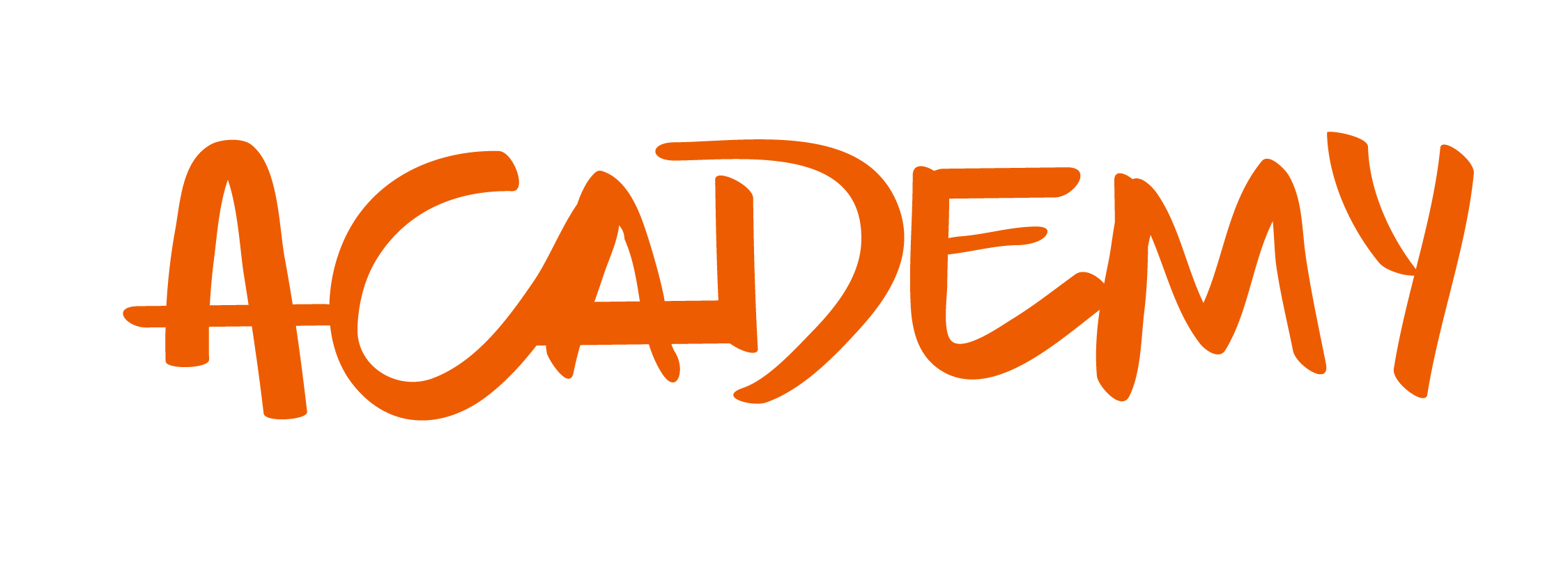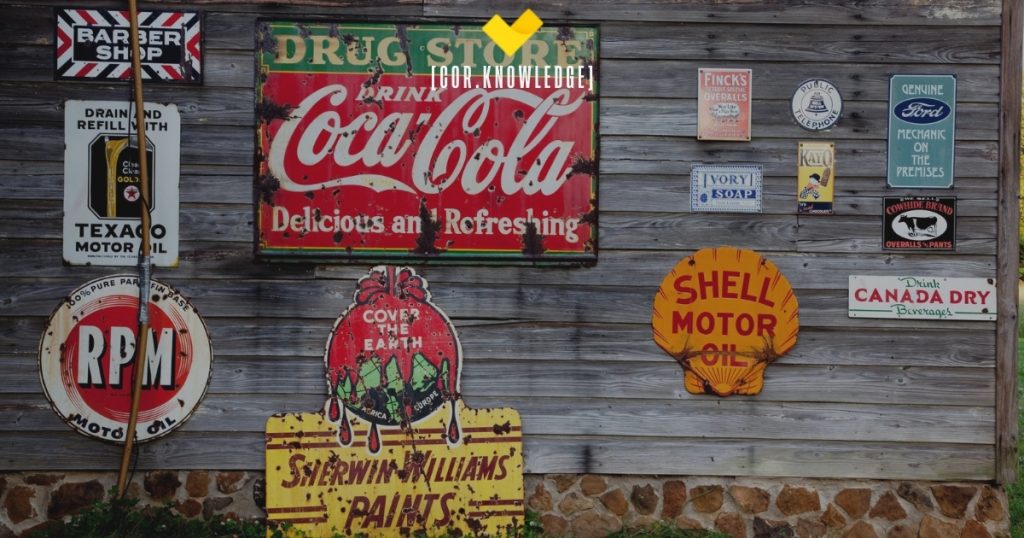Great ads stay with us for a long time, through jingles, images, and videos. They can be hilariously funny, or move us in unexpected ways. They can anger us, and make us question what we value in our lives. They inspire songs, memes, and inside jokes. They can remind us of what we don’t want to be, what we miss, and who is important to us.
Whether you love watching the Super Bowl halftime ads, or if you find them frustrating or annoying, anything that can gather so many emotional responses is worthy of attention. Let’s take a moment to see why we care so much.
Types of Advertisements
Across every type of media, there are different difficulties and complexities that need to be incorporated in an ad. Print, radio, video to name a few, have radically distinct subtleties that need to be used in the smartest way, for creatives to get the right message across.
A classic. Within a simple format, print ads require next-level ingenuity to stand out of the page and capture your attention. They are usually multifaceted and carry different layers of meaning and reading possibilities. Even in the age of video and short clips, print still has a resounding quality to it that manages to attract viewers. There’s a reason that even throughout the coronavirus pandemic print ads still managed to be successful: an excelling print ad, with the right combination of pictures, words and design can have a huge impact.
TV Video Ads
Television was and still is a really important market. And the prices brands are willing to pay in order to be on popular viewing times are astronomical. For example, 30 seconds of screen time during the 2021 Super Bowl reached $5,500,000, and for the same amount of time in the 2018 World Cup English channels charged around £500.000.
TV ads began in the 1940s with the fostering of practical items and political campaigns. Nowadays there’s nothing TV ads can’t reach, every big industry is present in some form on local TV channels showing food, toys, department stores, professional businesses, etc. Television allows for the careful selection of which product or ad campaign would follow each show, targeting specific audiences.
Internet Ads
Since the mid-1990s and the beginning of banner advertisement, the digital market has taken over the world. And here we are, 3 decades after that, with around 356 billion U.S. dollars spent on digital advertising in 2020. And the numbers are estimated to grow at a rapid pace in the coming years. According to the latest projections, digital advertising revenue will amount to 460 billion U.S. dollars by 2024.
Now banners are just another service offered, with evermore skilled and specialized marketers taking advantage of the many spaces internet and social media offer. Including video, search engine marketing, sponsored social media posts, and more.
The distinctive feature of digital ads is that they can expand across several media and social networks, creating well-rounded campaigns for relatively low costs. They can drive engagement through the roof, have a direct channel of communication with their customers, and they can rapidly respond to real-time events in ways traditional ads could never.
Our Ranking of Best Ads
Print Ads
Norwegian Airlines
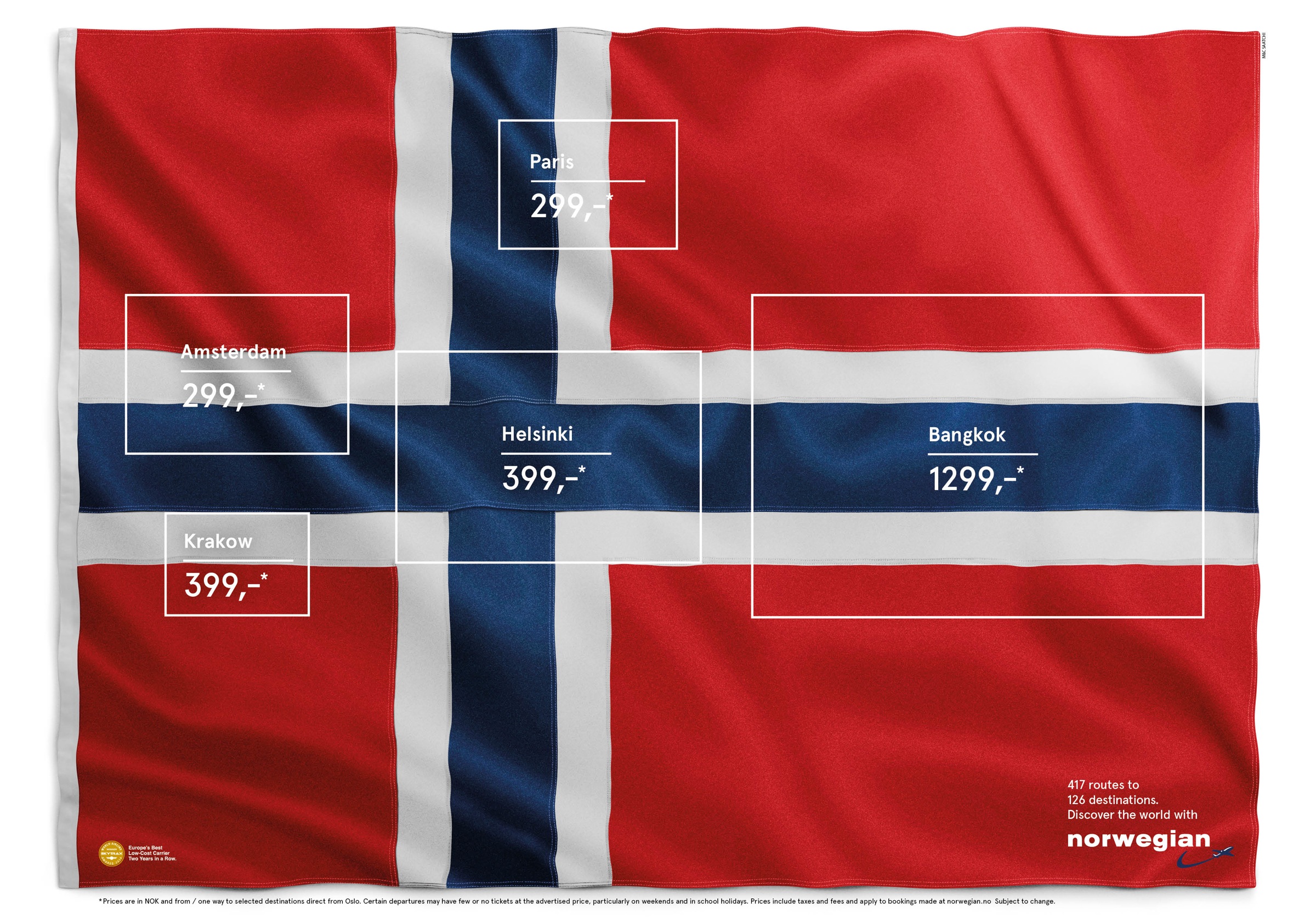
This is what print is all about: smart design, simple yet informative. This concept was originally created in 2015 by the Stockholm-based agency M&C Saatchi. A Flag of flags spotlights some of the many flying routes Norwegian offers with its pricing in a clean, and pleasing way.
It manages to be effective without being convoluted. It is easy to understand, to reproduce, it can be a banner, a billboard, a whole page, or a snippet inside a magazine. It calls your attention and then invites the viewer to take a moment to explore each flag. It is versatile, ingenious, and graceful, just what we look for in prints.
Open all night
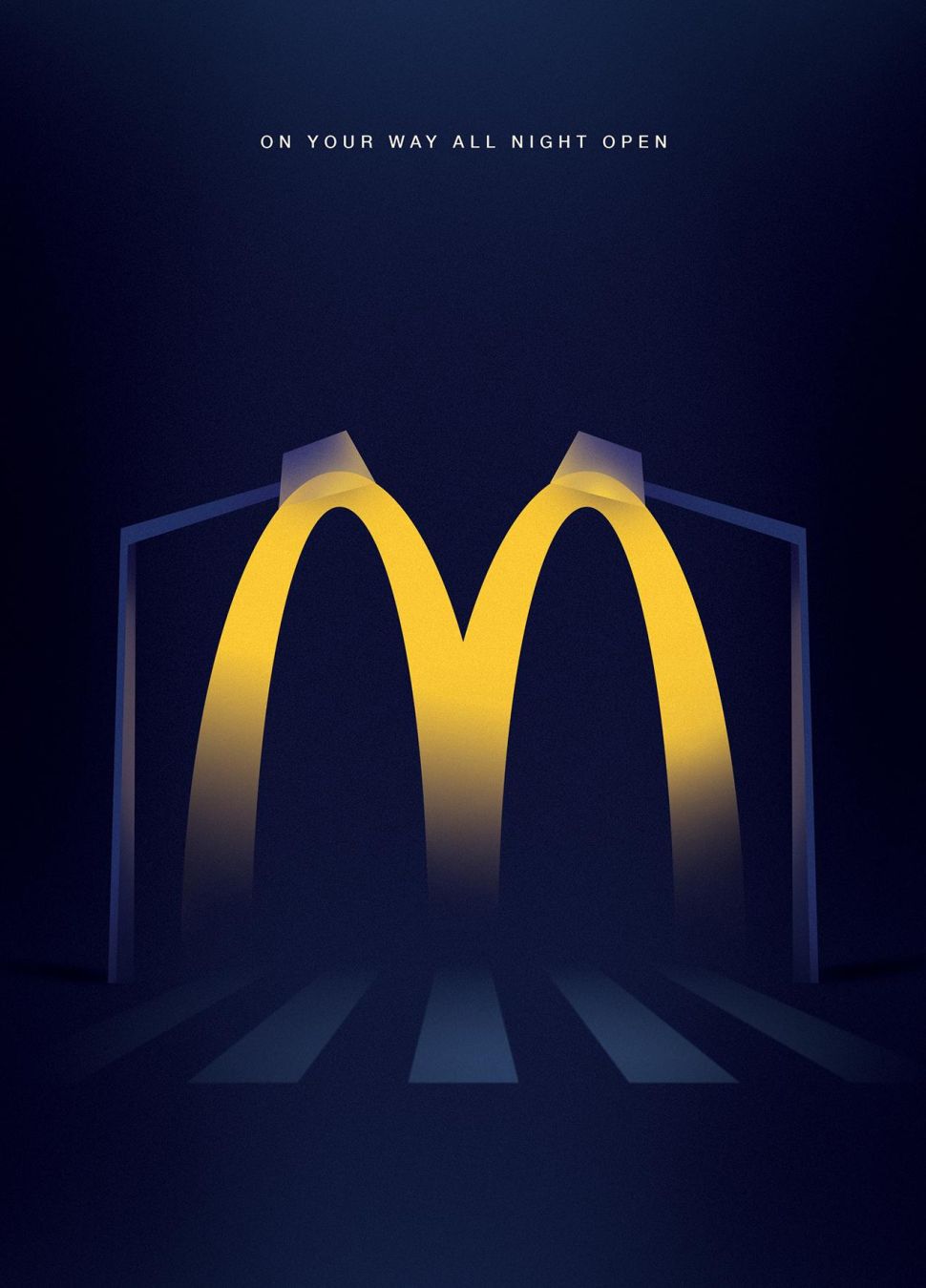
This ad from McDonald’s manages to capture an almost universal experience, it’s no wonder it comes from Leo Burnett’s amazing mind. Following the brand’s minimalistic shift in branding from the last decade it manages to catch a phenomenological occurrence while reminding the viewer of important information.
This print is alluring in its gentle reminder of a well-installed message in our collective mind: whenever and wherever you are, McDonald’s will be there to accommodate you. The brilliance of this ad is that it rests comfortably on the brand’s legacy. It simply gives you a soft nudge in the right direction, showing you how many miles until you reach the next pair of golden arches.
Flame-grilled
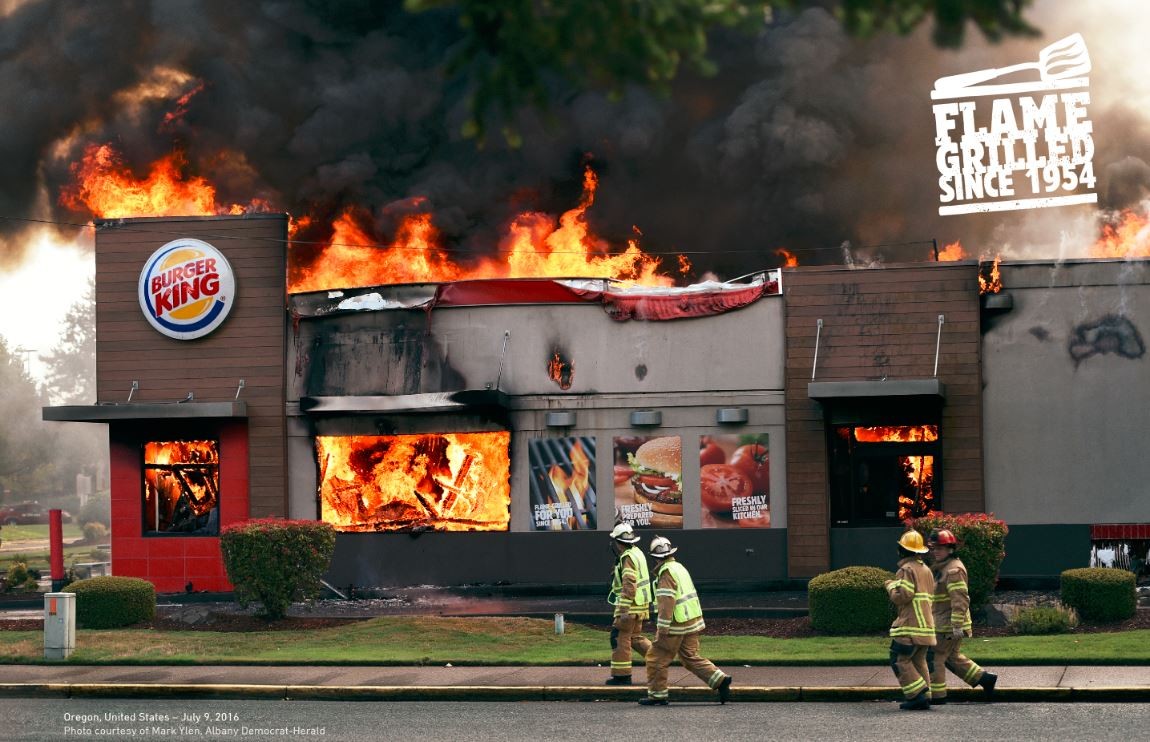
On the other side of the fast-food industry, we see a different take. Burger King’s differentiating feature is its grilling process. The brand prides itself on its flaming waves licking at the burger patties. This ad is a perfect example of a brilliant idea, using a negative experience as a marketing strategy.
Since 1954 Burger King holds the record for most burned-down restaurants ever since, and DAVID Miami chose to lean into the flame and launch this campaign, using actual footage of real-life burning Burger Kings.
Choose One
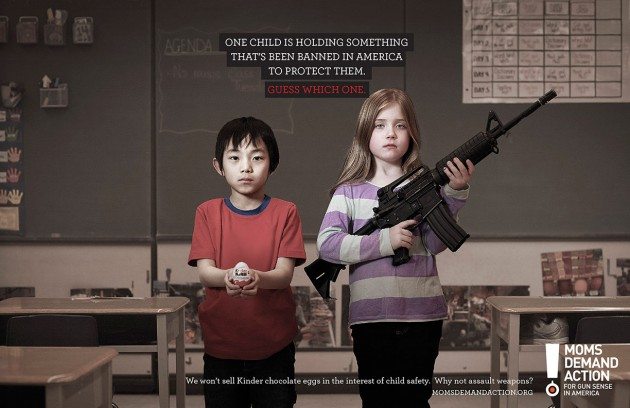
Grey Canada is not messing around. This shocking image is the result of a 2013 campaign for Moms Demand Action, a group of parents advocating for gun law reforms. This is a great example of the reach a print can have. As well as the utter influence and importance of Ads inside politics and social movements.
Whiskas
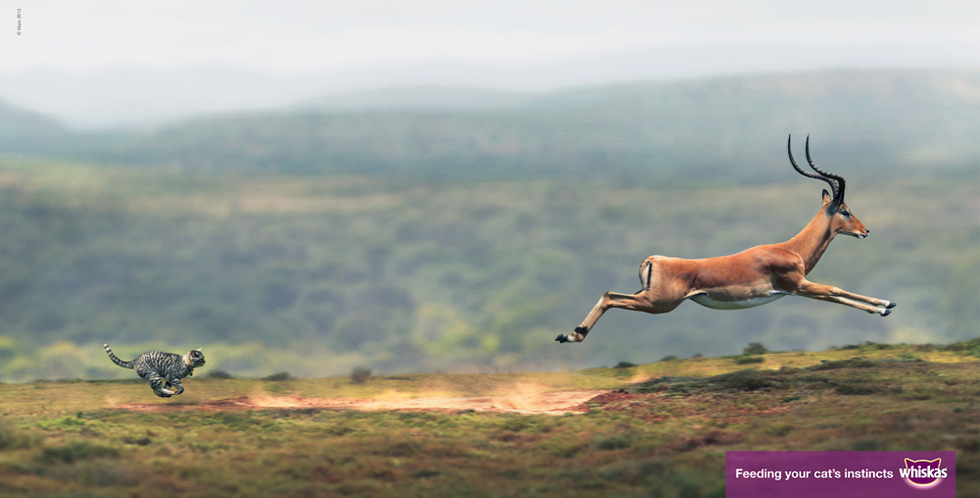
AMV BBDO launched a series of images as a campaign for Whiskas. These prints feature a household cat in wild and free layouts, running through the planes of Africa. ‘Big Cat, Small Cat’ is a simple, yet fun message, using photographs shot by George Logan, it highlights a very distinctive instinct that remains present today in our furry companions.
Television Ads
Rang-tan (Iceland)
This video was originally designed to premier as an English Christmas Ad for the #NoPalmOilChristmas campaign launched by Iceland Foods. But due to the heart-wrenching content it was banned. The animation is simply beautiful and entrancing, with renowned British actress Emma Thompson doing a voiceover on a clip of a little orange orangutan causing trouble. At first glance it looks like a simple children’s ad, but it changes in tone in a matter of seconds.
The dark turn shows the devastation caused by the palm oil trade on the little monkey’s natural habitat. This shift in theme and a brave storytelling decision helped the ad gain over 65 million views across social media and TV, and it helped Iceland Foods reach the second highest place in talkability scores.
The Sculptor (Peugeot)
Let’s move on to something less tear inducing, like one of the best car ads of all time. The Indian sculptor managed to turn a Hindustan Ambassador into a Peugeot 206 with the help of a wall, an elephant and a hammer. Developed by Publicis, this ad has won several awards, like the 2003 Cannes, 2003 Clio Grand Prix, and the Eurobest 2002. It’s fast-paced, it’s funny, it hit the mark.
It was so popular that 15 years later a group of Indian engineers spent several months actually converting the old model into a Peugeot 206.
Write the Future (Nike)
A 3 minutes monster of an advert. Production for the 2010 World Cup was performed by the UK-based production company, Independent Films Limited. This ad carries epic visuals accompanied by some of the top football players at the time, like Didier Drogba, Fabio Cannavaro, Wayne Rooney, Franck Ribéry, Ronaldinho, and Cristiano Ronaldo.
The narrative follows the players as they make vital micro-decisions in the game. It shows a very visceral fanatic feeling and communicates it only through image, sound, and intuition. It broke all kinds of records, managing to get 7.8 million views in only a week, and winning the Film Grand Prix at the 2011 Cannes Lions festival.
Whassup (Budweiser)
What makes an ad so recognizable and referenced even over 20 years after its debut? We should ask the people at DDB for an answer, since they are the ones that created the famous 1999 Whassup ad.
The ad won the Cannes Grand Prix award, the Grand Clio award, and was inducted into the CLIO Hall of Fame. What is it about a group of friends goofing off and having a silly conversation that made it so remarkable? Does it speak to us as a social animal? Is it just fun?
Whatever is the reason, this ad jumped out of the commercial and made it into movies, shows, and the general public’s way of talking. Cited by Scary Movie, Friends and The Office to name a few, this video has reached the point of a cultural phenomenon, you may even have made a reference to it without even knowing it.
Always (Like a Girl)
Most likely, you have seen this ad. Or at least you’ve seen clips and screenshots going around. Like a Girl became a viral sensation, with people arguing about it, getting emotional over it, or using the #LikeaGirl tag. Whether you have seen it or not, Always hit gold with this ad, it went through the roof after its debut in the 2015’s Super Bowl. It also accomplished the hard task of delivering a heartfelt message in a way that sounds genuine.
The brand calls attention to the way the casual insult “like a girl” is used as a demeaning term in sports, and it was the starting point of a massive campaign to help teach confidence to girls and young women. The company partnered with TED in order to generate educational videos, and has an holistic initiative, you can check this out on their website.
Internet Ads
Metro Trains: Dumb Ways to Die
As public service announcements go, this is a good one. Melbourne’s MetroTrain wished to give a clear and transparent message: don’t goof off near the train tracks. A simple idea transformed into an adorable and fun animated ad, with a slightly obnoxious and extremely catchy jingle.
It was an instant success, with over 2.2 million views on youtube. Its melody was so violently catchy, with a softly sung chorus saying “Dumb ways to die”, that it was made available on iTunes and played over the radio. It shows a creative alternative to a nagging style voiceover.
Old Spice’s The Man Your Man Could Smell Like
This ad was an incredible internet event. The minds behind this 2010 campaign for Old Spice were Wieden+Kennedy, and it won the Grand Prix for film at the Cannes Lions International Advertising Festival, and in July 2010 a Primetime Emmy Award for Outstanding Commercial.
The video linked is the first of many, it gathered an enormous digital interest, it manages to comply with several of the 2010’s main online trends in a perfect mixture of cool and insane. Why was it so popular? In the first place, it manages to shift the delivery and target audience, from men to women who buy men’s hygiene products. In the second place, Old Spice took the fame and ran with it, making a series of video ads, social media profiles, and even creating a choose your own adventure game on their Instagram. This is an excellent example of social media engagement and seizing every opportunity.
Oreo’s social media campaigns
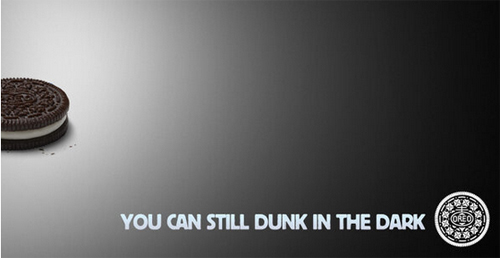
Around 2013, Oreo was the reigning champion of social media. They were up to date with their targeted audience, and they took stands regarding social and political issues. This makes their customers more involved and loyal to their brand. They were wickedly fast and gave a great deal of importance to ongoing cultural events.
Oreo’s Twitter was spot on, and delivered many famous lines, like the one depicted above, during the 2013 Super Bowl blackout. As well as images, posts, and memes. The fun and whimsical tone, combined with constantly updated content was enough to make the brand a social media favorite, and drive its online engagement up to %110.
Chipotle’s #Boorito Challenge
Tik Tok is a cultural phenomenon that started the short video clip race across every platform online. The trends and challenges have done wonders for the music industry. Many brands are starting to look into this market, and some of them are even playing the game in the right way.
Chipotle has an annual “Boorito” day for Halloween, where they offer food at a reduced price for people who order in costume. TikTok has become a key part in Chipotle’s promotional campaign. The challenge invites users to create a video showing their before and after Halloween transformations, using the custom sound bite that Chipotle created just for the campaign. The top five posts won free burritos for a year.
During the pandemic, digital sales went through the roof. With a stable ad campaign, a strong social media presence in Tik Tok and Instagram (where their targeted audience of less than 30 years dwell), and partnerships with Uber Eats and Grubhub, the digital sales grew 216% during the second half of 2020 and tripled to a record $829 million.
Absolute’s Kiss with Pride
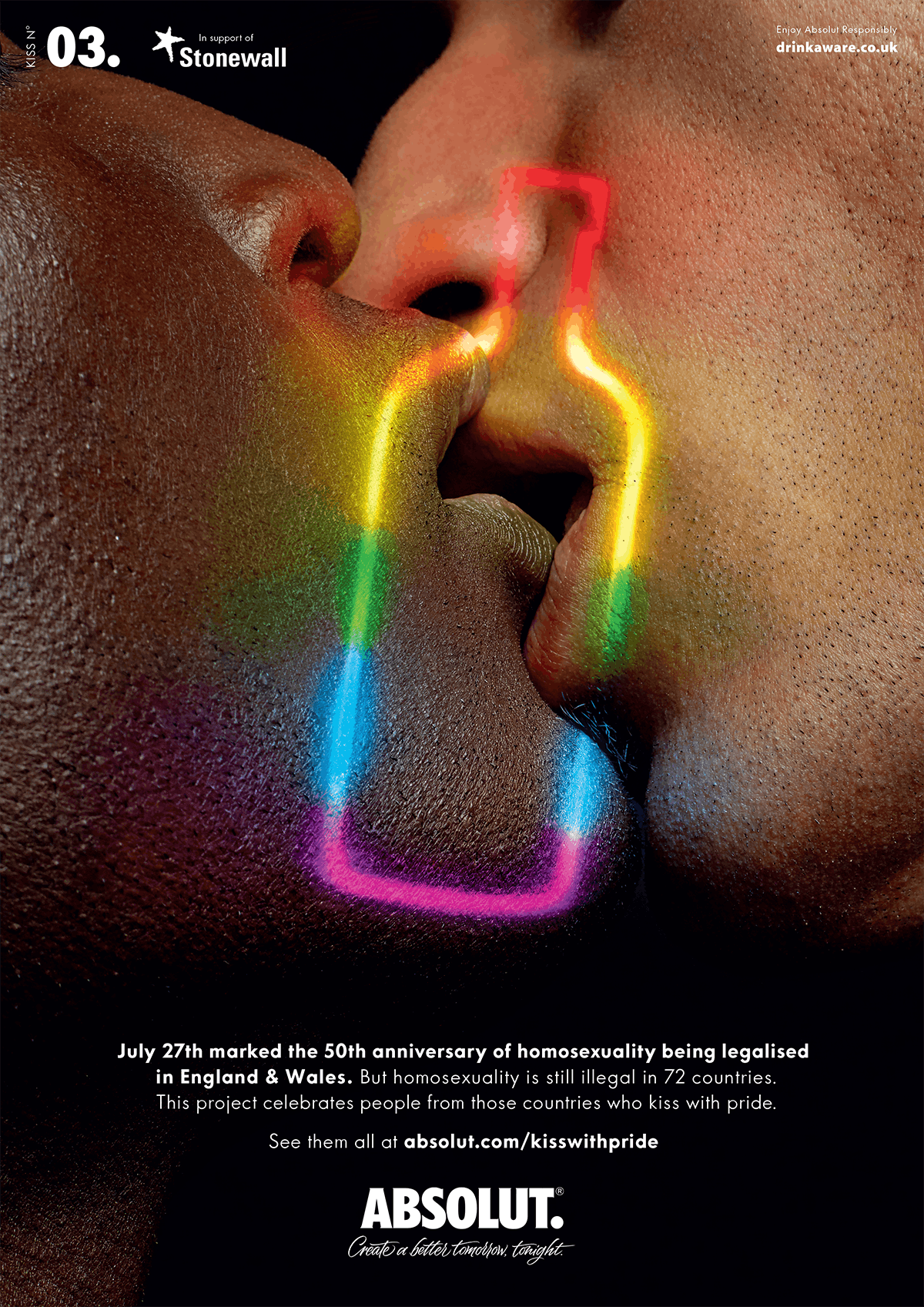
This ad came in print format, but it got a violently viral response online. Absolut, in collaboration with Stonewall Charity and BBH London, released several images of LGBTQ couples to celebrate 50 years of the decriminalization of homosexuality in England and Wales. In order to bring attention to the fact that it’s still illegal in 72 countries. Many of the couples depicted actually came from said countries.
The initiative gathered a lot of attention and it was applauded and rejected on social media. A succès de scandale, which is to say there’s no such thing as bad publicity. With people from the LGBTQ community joining and sharing their own pictures, and some blaming the brand of pinkwashing. With the participation of famous couples, some LGBTQ and some not, there was a lot of discourse around this ad, the trend went viral.
Pandemic Ads
Google: Year in Search (2020)
This may not be the best known yearly trend, but this year’s iteration of Google’s Year in Search video ad is powerful. Google can be defined as the internet’s main doorway, it is the place we visit when we are curious. And that curiosity takes us to the best search engine’s main page to satisfy our hunger for data: simple trivia facts, fun memes, existential questions, wanting to prove someone else is wrong, and the status of the world.
This series of ads began in 2009 and every single delivery is a masterpiece in remembrance and narrative. The storytelling ability shown is out of the park, but this year’s video is especially moving, going through lockdown, the Australia, California and Amazon wildfires, the many people lost, the countless ones protesting for their lives. And Google does it seamlessly, showing interest in what motivates its customers and what unites us in the most humane way possible.
Apple’s The whole working-from-home thing
The 7 minutes production from TBWA/Media Lab captures the first wave of lockdown in a clear and hilarious way. Apple brought back the 2019 award-winning Underdog team fighting for a world with round pizza boxes, with only will and apple products by their side.
They manage to show just how hard-working from home can be, with calls, constantly cleaning mugs, and trying to make do with what you have. The ad works perfectly and shows some of Apple’s features in an organic and natural way. It even won a Silver Clio Award, like its predecessor. Keep an eye open, it seems the Underdogs may have more ads to show us in the future.
Match.com’s 2020 and the devil
Who doesn’t like a nice love story? Even Satan and the worst year for the pandemic agree as they meet through the dating app. In this ridiculous ad made by Maximum Effort Production, we can root for the pair causing mayhem to the rhythm of a Taylor Swift song. And maybe hope they stay busy enough for the rest of 2021.
Burger King’s Stay at Home for the Whopper
BK certainly has done a number of things right, they shared several video ads and initiatives during the lockdown. This one plays right into the civic duty of staying in and ordering food. We can all remember the first waves of Covid, the uncertainty and fear.
BK launched a series of short ads across every platform, encouraging people to stay in and order a Whopper. With their promotions and 0$ delivery fees, they managed to stay on top of the restrictions and sell food. A great initiative from the fast-food chain was the sharing of meals with workers on the front line. They also facilitated a donation link in their app and gave support to the American Nurse Foundation.
In such a complicated time it’s nice to see big brands offering support to the heroes that were, and are, taking care of society.
Coca Cola’s Open like never before
“What if the new normal isn’t the normal we knew? And we can’t just do what we’d formerly do?” Recites George the Poet as the ad begins. And it rings true, isn’t this a valid question on the ending side of this pandemic? As more people are getting vaccinated it seems there’s an end in sight. But neither we nor Coca Cola, try to describe the shape the future will take, only that there has been a change in us and in the world.
What do They Have in Common?
Advertising requires a lot of creativity, sensibility, and being in touch with what is happening in the world. Ads are the narratives we tell ourselves, they show us what we value and what to treasure. There’s no magic trick or recipe to follow, but there are some things the ads we shared today have in common with each other.
They are distinctive, they deliver the intricate message from the brand, they are meaningfully different, they trigger an emotional response, and they engage their consumers. Great creatives can gather the attention in service of the brand, and make sure consumers know how the brand fulfills their functional, emotional, and social needs.
As David Sable discussed with us: “Storytelling can change the world, and it has done so many times. Every revolution began with a story, that’s a fact. And every revolution will begin with a story.”
We also want to start a revolution, at COR we want to improve the state of the professional service businesses, we want to improve their margins and take care of their people, we want to help them continue to tell our stories.

